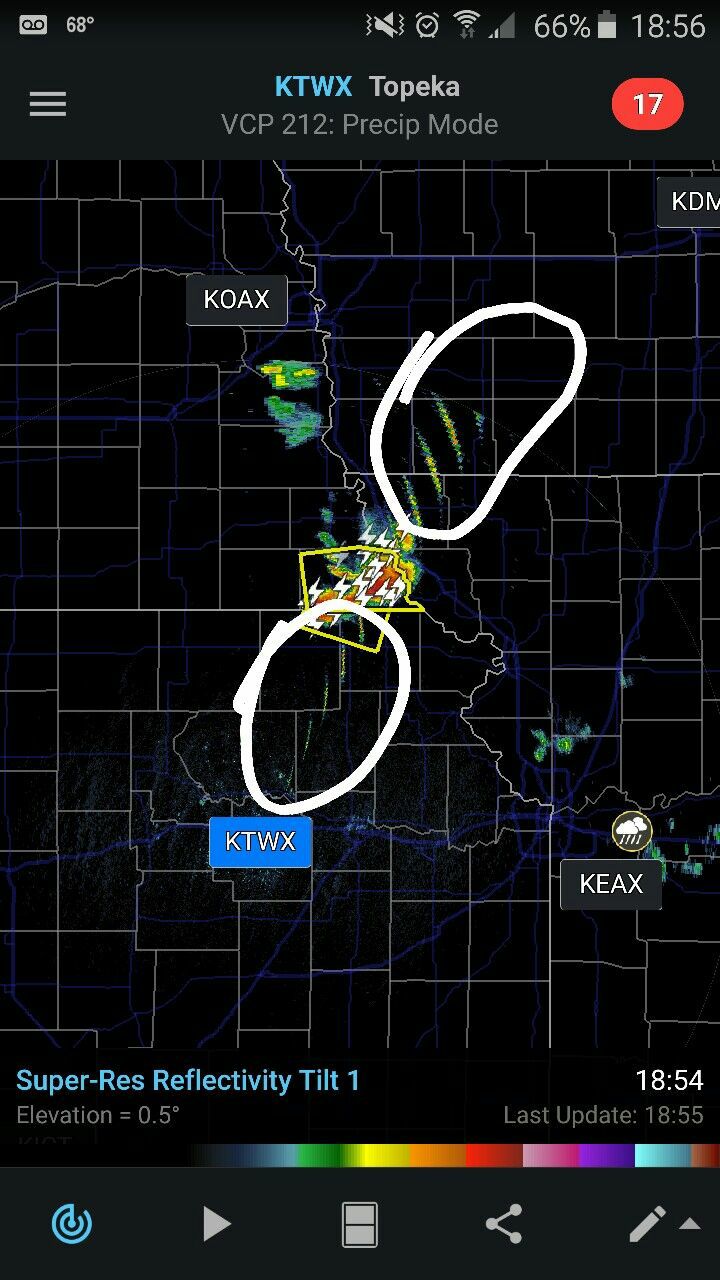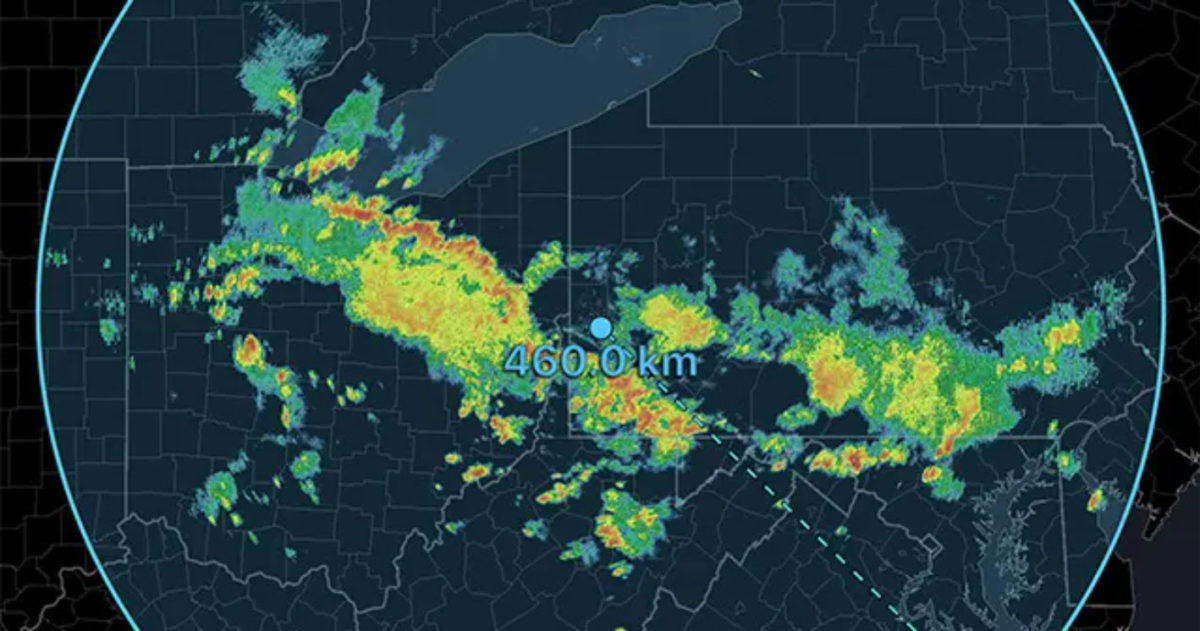Occasionally, long streaks can be observed on reflectivity images. These streaks are a type of interference known as bistatic coupling, or “running rabbits.”
On average, NEXRAD radars are spaced approximately 143 miles apart across the United States. As individual radars scan their area, their radar beams occasionally intersect with beams from adjacent radars as they observe the same target (rain, hail, etc.). When the beams from each site intersect, a feature known as “running rabbits” can appear on reflectivity imagery. For these features to occur, two or more adjacent radar sites must be transmitting at the same frequency. This interference typically only lasts a few minutes but has been known to last over two hours in rare cases.
To resolve this issue, the frequency of one or more of the radars is adjusted. This solution is only intended to be a temporary fix because changing the frequency can affect other radar properties. For example, if the frequency is increased, the range of the radar is decreased. Likewise, reducing the frequency will increase the range of the radar. Changing the frequency can also change the scale of velocities that can be observed by the radar. Below is an example of what running rabbits may look like on a reflectivity image.
 Example of Running Rabbits
Example of Running Rabbits
Running rabbits can appear anywhere, but are most common in the Central US, the Southeast, and in the Northeast. Though the impact of these features is usually minimal, if they are persistent over a few consecutive volume scans, they can impact storm tracks, Vertically Integrated Liquid, velocity products, and precipitation products. The effects on velocity products can also affect the ability to identify mesocyclones, as well as Tornado Vortex Signatures, which can be indicative of potential tornadoes.








